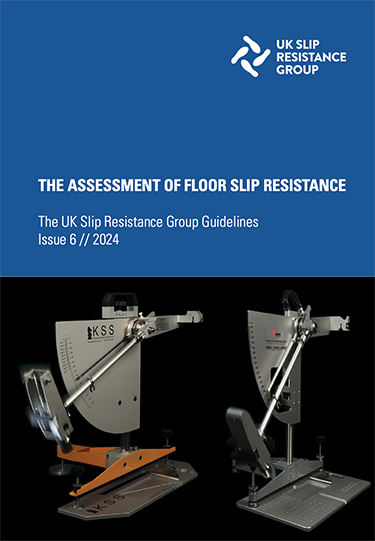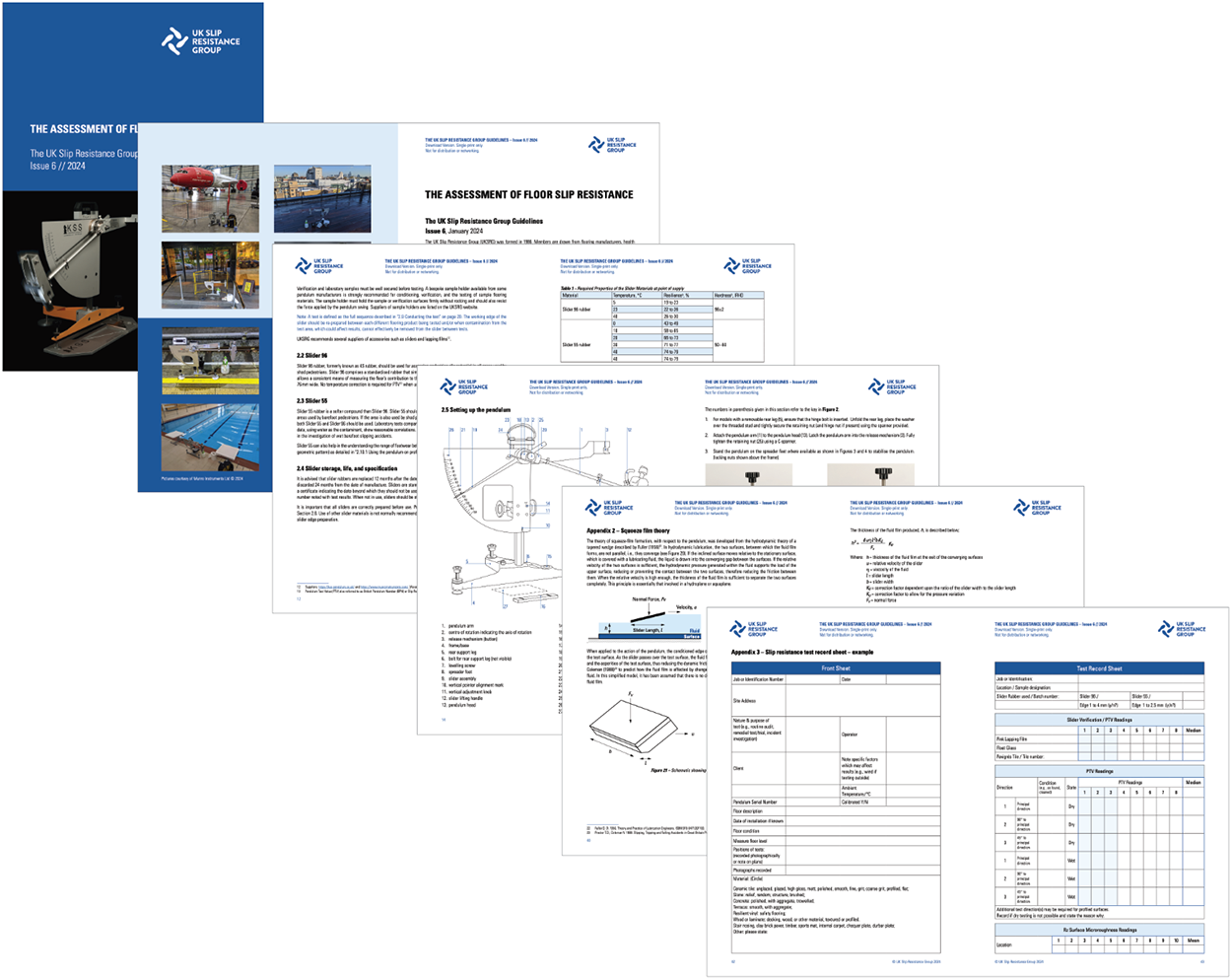UK Slip Resistance Group Guidelines – Issue 6

The UK Slip Resistance Group compiles, publishes and distributes authoritative guidance on how to reliably test the slip resistance of flooring materials.
The Assessment of Floor Slip Resistance
The UK Slip Resistance Group Guidelines
Issue 6 – 2024
Like all previous versions, version 6 remains as a guideline rather than a British Standard. Nonetheless, it is a comprehensive revision of version 5. Its purpose is to provide a consensus view of the UK Slip Resistance Group in how to undertake slip resistance and roughness measurements correctly, with increased clarity, as well as to understand the meaning and limitations of test results.
There are many new sections and a number of modifications to testing methodology together with more prescriptive instructions, wherever possible. Some key features of version 6 include an important new section on interpreting test results, as well as consideration of a key new British/European standard for the measurement of slip resistance. Diagrams and photos have been used extensively to assist the user.
Version 6 supersedes all previous versions.
Issue 6 has the following content and is available to be purchased as digital PDF:
Scope
Section 1 – Introduction
1.1 Background
1.2 Why do people slip?
1.3 General principles
1.4 Why the pendulum?
1.5 Why microroughness?
1.6 European standard BS EN 16165:2021
1.7 Other slip tests and requirements that may be encountered in the UK
1.8 Health and safety reminder
Section 2 – Measuring slip resistance and Rz microroughness
2.1 Slip resistance equipment
2.2 Slider 96
2.3 Slider 55
2.4 Slider storage, life, and specification
2.5 Setting up the pendulum
2.6 Slider preparation
2.7 Verification
2.8 Verification using Slider 55
2.9 Conducting the test
2.10 In situ pendulum testing considerations
2.11 Using the pendulum for laboratory tests
2.12 Temperature correction Slider 55
2.13 Uncertainty
2.14 Service and calibration
2.15 Care and maintenance of the pendulum
2.16 Troubleshooting
2.17 Using the microroughness meter
Section 3 – Interpreting the results
3.1 Level surfaces
3.2 Sloping surfaces
3.3 The effect of installation and wear on slip resistance
3.4 The effects of cleaning and maintenance
3.5 Interpreting roughness data
3.6 The role of footwear
Section 4 – Appendices
Appendix 1 – Comparison between EN 16165 pendulum test and UKSRG Guidelines
Appendix 2 – Squeeze film theory
Appendix 3 – Slip resistance test record sheet – example
Bibliography
—
The 50 page document is an interactive PDF (9.6MB), with active web links and cross references. It is saved in single page per view mode (optimal for e-Reader and small displays), but we recommend for bigger screens the “2 page view” to read as double page document:

—
Previous versions of the Guidelines are available for purchase from the Group Secretary for the same price as the Issue 6 ones.
.
Become a member and get involved in the UK Slip Resistance Group
More